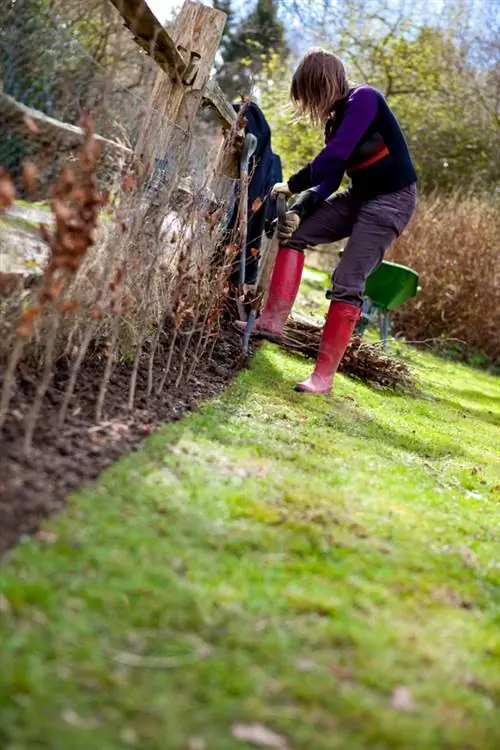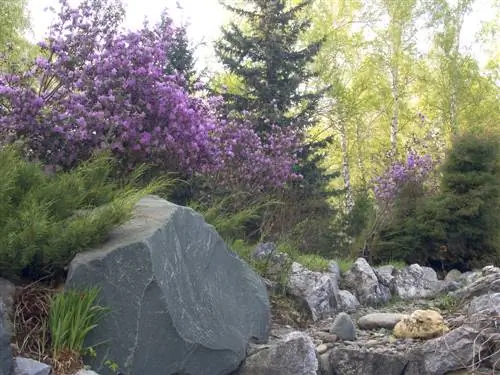- Author admin [email protected].
- Public 2023-12-16 16:46.
- Last modified 2025-01-23 11:22.
Coniferous trees are very popular as green enclosures because they do not shed any leaves in autumn and at the same time grow relatively quickly. As a solitary plant, firs impress with their tier-like structure, the interesting-looking, upright cones and the beautiful crown. You can find out whether you can also create a hedge with these trees in the following article.

Appearance and growth of the fir tree
In everyday use, coniferous trees are often referred to as Christmas trees, although in many cases they are spruces. You can recognize fir trees by these characteristics:
- The needles are smooth and rounded. In contrast to spruce needles, they do not prick.
- The needles are arranged parallel to the outside and running left and right.
- There is a so-called wax strip on the underside.
- The pine cones are pointing upwards. You will rarely find complete cones on the ground because the scales still fall off the tree.
- Fir trees also form branches in the lower area.
Are firs suitable as hedge plants?
Fir trees are often cultivated as solitary plants in parks. They impress here with their expressive growth, which only comes into its own in individual positions. This property is lost when planted as a hedge, where the fir trees are regularly pruned.
A fir hedge can also pose particular challenges to other garden plants. With their roots that extend far into the earth, the fir trees extract a lot of nutrients and water from the soil. The falling needles change the pH value of the substrate into the acidic range, which is not comfortable for many plants. For this reason, fir trees are not suitable as hedge plants.
Well suited for hedges: the hemlock
An exception is the hemlock, which is well suited as a hedge plant that tolerates pruning. This is a type of conifer that looks similar to yew, but is non-toxic.
However, the hemlock does not tolerate dry and sunny locations. This fir species is also sensitive to the root pressure of large deciduous trees. As a shallow-rooted plant, it cannot withstand stormy winds and should therefore be planted in more sheltered locations.
Extremely cut-friendly
Hemlock trees do very well with regular pruning. You should preferably use scissors in spring, before the first shoots appear. However, you should note that if you cut back into mature wood, the plant is reluctant to sprout again and, if possible, only shorten branches that are not older than three years. Be sure to prune pyramidally so that the lower branches do not become bare.
Tip
If fir trees lose their needles, a lack of water is often the cause. In the hot summer months, you should therefore repeatedly water the trees thoroughly for at least thirty minutes.






